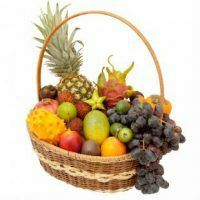| Apricot | 48 | Mandarin | 38 | ||
| Quince | 38 | Carrots | 33 | ||
| Cherry plum | 30 | Cloudberry | 31 | ||
| Pineapple | 48 | Mint | 49 | ||
| Orange | 38 | Seabuckthorn | 30 | ||
| Watermelon | 25 | Cucumbers | 15 | ||
| Artichoke | 28 | Dandelion | 45 | ||
| Basil | 27 | Papaya | 48 | ||
| Eggplant | 24 | Pattison | 19 | ||
| Bamboo | 10 | sweet pepper | 25 | ||
| Barberry | 29 | Chili | 40 | ||
| Broccoli | 28 | Peach | 44 | ||
| Cranberries | 40 | Parsley | 45 | ||
| Raspberry | 37 | Pomelo | 32 | ||
| Blueberries | 37 | Rhubarb | 16 | ||
| Grapefruit | 35 | Radishes | 20 | ||
| Oregano | 25 | Radish | 34 | ||
| Melon | 32 | Turnip | 28 | ||
| Blackberries | 33 | Rowan | 44 | ||
| Honeysuckle | 30 | salad | 14 | ||
| Green tea | 5 | Beet | 48 | ||
| Strawberries | 41 | Celery | 10 | ||
| Marrow | 27 | Plum | 43 | ||
| Kalina | 26 | Currants | 40 | ||
| Cabbage | 28 | Asparagus | 20 | ||
| carambola | 31 | turnip | 28 | ||
| Cabbage | 31 | Tomatoes | 15 | ||
| Kiwi | 48 | Pumpkin | 28 | ||
| Dogwood | 44 | Dill | 40 | ||
| Strawberry | 30 | Green haricot | 32 | ||
| Cranberries | 28 | Cranberries | 28 | Cauliflowers | 29 |
| Coriander | 25 | Chicory | 21 | ||
| Gooseberries | 44 | Zucchini | 16 | ||
| Lime | 16 | Sweet cherries | 34 | ||
| Lettuce salad | 17 | Blueberries | 40 | ||
| Lemons | 24 | Spinach | 21 | ||
| Schisandra | 11 | Sorrel | 25 | ||
| Green onion | 22 | Endive | 17 | ||
| Onion | 40 | Tarragon | 25 | ||
| Raspberry | 41 | Apple | 46 | ||
| Name | Caloric value, kcal | Name | Caloric value, kcal |
|---|

The term "products with a negative caloric value" appeared not so long ago. He was introduced by an expert in the field of healthy food American Mike Adams. According to this expert, there is a list of products with so-called negative calorie content. True, to take this term literally still not worth it.
- Myth or Reality
- Table of the main products of
Myth or Reality
Indeed, there are a number of products for which the body spends far more calories than they give for complete digestion and digestion. Their energy value after processing by the body equals zero or even can show a negative result.
But they improve metabolism, saturate the body with vitamins and microelements, benefit the intestines and stomach. They are the answer to the super urgent question: "What to eat to lose weight."
These products include celery, lettuce, nori, kimchi, sauerkraut, onions and cucumbers. In addition to the above, vegetables were included in the list of dietary products with a negative calorie content:
- pepper,
- tomatoes,
- turnip,
- pumpkin,
- zucchini,
- rhubarb,
- ginger,
- eggplant,
- green beans,
- turnips,
- red pepper( spicy)
- beet,
- white cabbage,
- broccoli,
- asparagus,
- cauliflower,
- carrots,
- green beans,
- garlic,
- radish,
- leaf lettuce,
- spinach.
Fruit:
- pineapple,
- melon,
- papaya,
- apricot,
- plum,
- peach,
- apples,
- mango.
Berries:
- figs,
- strawberries,
- currants,
- blueberries,
- raspberries,
- cranberries,
- watermelon,
- blackberries.
Citrus:
- lime,
- mandarin,
- lemon,
- grapefruit,
- orange.
Greens:
- chicory,
- dandelion leaves,
- parsley,
- watercress,
- dill,
- beet tops;
- basil,
- mint.
All these products with negative caloric content are included in a special table. The main thing to consider is the way they are prepared. When adding sugar, butter and other fats, these products immediately acquire additional calories.
Table of the main products of
For convenience, we have compiled a table that will help you choose rich in vitamins and trace elementsproducts with a negative caloric content.
This list of products with a negative calorie content is also allowed to supplement fish with low-fat varieties and low-fat meat, as well as seafood and chicken without skin.
In general, products with both negative caloric content and fat burning do not exist. But the energy value of some products is so small that they can be consumed without restrictions. For example, in 100 g of Chinese cabbage, only 16 kcal.

Very topical article now)) I heard about the negative calorie content of grapefruit and pineapple, but other fruits and vegetables became a discovery for me. For a couple and chicken, the vegetables will be very tasty, and for dessert you can eat fruit with berries)) Thanks for the useful information)